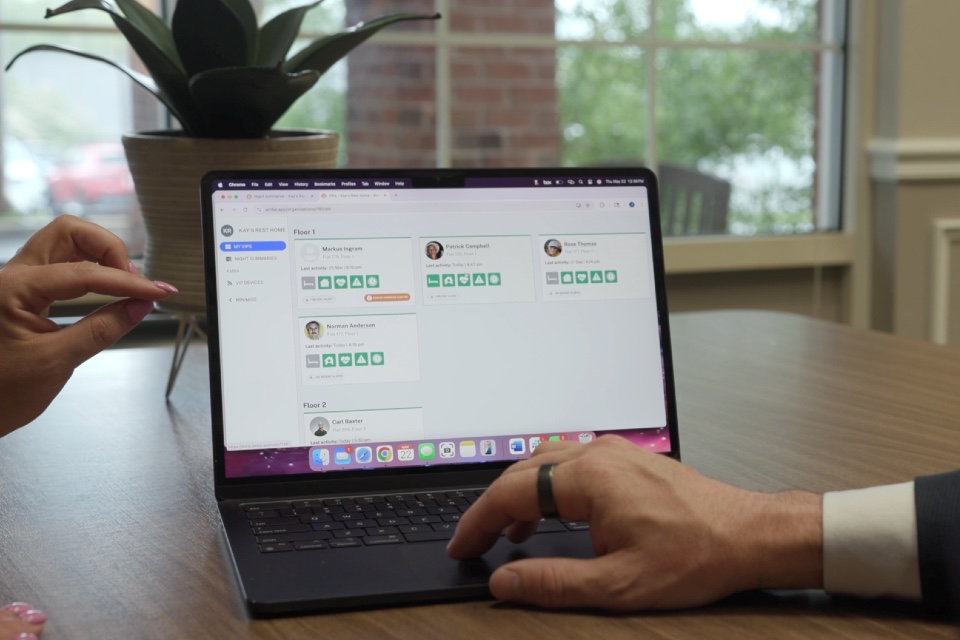Over the next ten years, the number of over 65s living in the UK is estimated to rise to 13 million. For those needing additional care support, with care home placements already limited, the homecare industry is expected to see a sustained increase in demand over this period.
Mike Williams, managing director, Tagtronics, discusses the resistance to digital technology within the care industry, and explores how care managers can overcome these challenges to maintain and improve continuity of care.
How has the care industry changed over recent years?
When it comes to the care industry, specifically thinking about homecare, the main objective for any business is delivering an excellent standard of care.
In January 2019, the NHS published a long-term plan, which details plans to drive technology into health and care over the next decade – supporting the efficiency of professionals, as well as service users.
The COVID-19 pandemic was also a shifter for many businesses, as we saw management forced to innovate and adapt rapidly to the challenging effects of the global crisis. Nearly three years later, businesses continue to use and build on these new ways of working.
From a customer perspective, the introduction of technology has provided service users with greater convenience, for example, they’re able to maintaining contact and communication with family and friends they’re unable to see.
However, the industry still has a long way to go. A 2022 CQC study evidences that the homecare industry is still understaffed – showing that, of 144 adult social service directors asked, 73% reported a rising number of breakdowns due to unpaid carer arrangements.
The resistance to digital transformation
Despite the development of technology within the care industry, many workers are still resistant to digital changes.
Many healthcare employees have been reluctant to accept the introduction of digital systems within their work environment for a number of reasons, including:
- Resistance to changing ways of working
- Lack of confidence in their ability when it comes to technology
- Time-consuming training on top of an already pressured workload.
However, when tailored to your homecare business, your digital system doesn’t need to change your carers’ ways of working. Instead, it should be simple, mirroring your existing processes in a digital form – enabling easy adoption across your employees, with minimal additional training required.
Addressing carers resistance to change
Firstly, to minimise resistance to change, homecare managers must demonstrate the benefits of using a digital system to carers. This includes:
- Minimising unnecessary mistakes – medication mishaps, missed appointments or even misread handwriting can have significant consequences for service users. A digital system ensures all medical history documents and test results are accessible and readable, making sure the correct medication is always allocated. It also ‘walks’ carers through every visit, so nothing is missed.
- Increasing efficiency – a paperless system means that everything is kept in one place. The easy updating of documents and immediate access to records allows for increased organisation – resulting in improved productivity and enabling carers to focus on delivering care, instead of completing admin duties. CQC visits can also be recorded, helping companies to understand how they can improve in time for the next inspection.
- Lowering costs – with a digital system, you can also reduce finances all around – including paper and print costs, as well as travel expenses of homecare workers. Team rotas can be organised around location, so carers can be allocated to service users based on proximity, amongst other factors. These financial savings can then be used to improve other areas of business – for example, the quality of care you provide, or the rewards you’re able to offer your team.
- Improving customer experience – all the above benefits come from internal processes, which support the main objective of every homecare business – the service user experience. A digital system improves effectiveness and efficiency, allowing cares to spend more quality time with service users.
As well as showcasing the benefits of digital systems, care managers must also provide employees with adequate training. A 2019 survey shows varied views regarding healthcare workers’ level of digital skills. Providing these training records via digital systems can also allow homecare workers to refer to them when needed – no matter where they are.
Maintaining human connections
Although many care businesses continue to implement digital technologies into their business models, the importance of human connection must not be forgotten. Service users – and especially elderly service users – can often feel lonely and isolated.
Robots have recently been suggested within the UK care industry to reduce loneliness – and although trials have proved these robots improved mental health, there’s nothing like an in-person conversation to feel ‘human’ and connected.
We know why carers choose their career – because they love helping people. A 2021 survey of health system technology leaders found that 92% wanted to achieve better customer satisfaction, with 56% wanting to improve care quality.
As digital technology within the UK care industry continues to develop, getting the balance between digital benefits and in-person communication is key to maintaining continuity of care. Allowing workers to do the best job they can help them feel fulfilled and keep them motivated – all while working efficiently with a digital system. Face to face connections can help to strengthen relationships and build trust between carers and service users.
For homecare managers, digital systems give you the opportunity to optimise your way of working – resulting in long-term business benefits.
For more information, visit Tagtronics or call 01254 819 205.
Photo by National Cancer Institute on Unsplash






